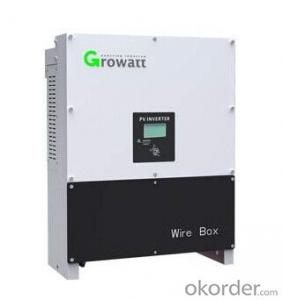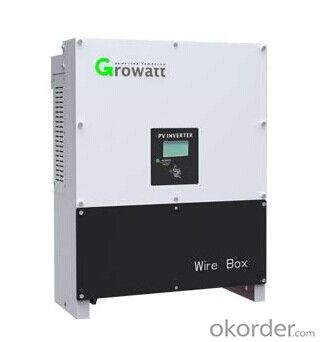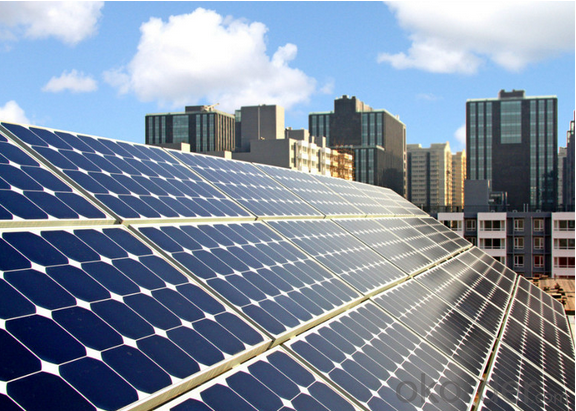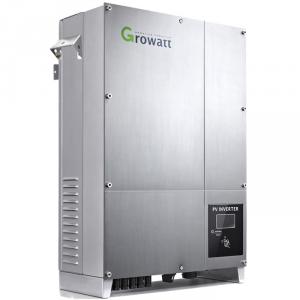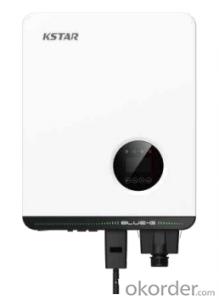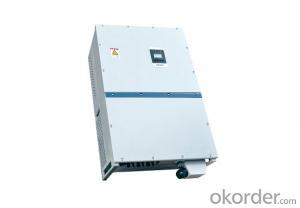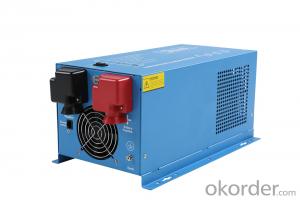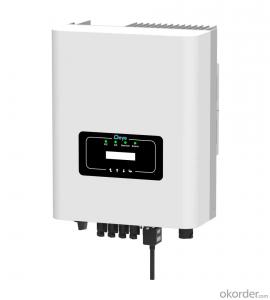Solar Inverter Battery String Solar Power Inverter 10KW-20KW-US, ETL
- Loading Port:
- Shekou
- Payment Terms:
- TT OR LC
- Min Order Qty:
- 5 watt
- Supply Capability:
- 10000 watt/month
OKorder Service Pledge
OKorder Financial Service
You Might Also Like
String Solar Power Inverter 10kw-20kw-US, ETL
Specifications
Maximum efficiency of 98%
Multi MPP controller
MTL String
Bluetooth technology&Sound controlPV Inverter 10000UE,12000UE,18000UE,20000UE-US Series
Leading - edge Technology
High efficiency of 97.5% delivery more energy
Dual independent MPP tracking lead to optimal energy harvesting
Integrated DC disconnect switch
Consistent and stable performance across entire input voltage and
output power range
True three-phase transformerless GT topology
Bluetooth / RF technology / Wi-Fi
Sound control, easy installation maintenance procedure
Newest generation IGBTs and advanced MPPT algorithms
Comprehensive protection for IGBTs, overvoltage, islanding,
short-circuit,overload,overheat,etc
Flexible system design with safety fuse module and lightening
proof moduleModel
Specification
10000TL3-US
12000TL-US
18000TL-US
20000TL-US
Input data(DC)
Max. recommended PV power
12500W
15000W
21600W
24000W
Max. DC Power
10500W
12500W
18750W
20850W
Max. DC voltage
600V
600V
600V
600V
Start voltage
120V
120V
120V
120V
DC nominal voltage
375V
375V
375V
375V
PV voltage range
80V-600V
80V-600V
80V-600V
80V-600V
MPP voltage range(Full load)
250V-600V
250V-600V
250V-600V
250V-600V
Max. input current of the MPP tracker A/tracker B
21A/21A
25A/25A
38A/38A
42A/42A
Max. input short circuit current
32A/32A
32A/32A
50A/50A
50A/50A
Number of independent MPP trackers/strings per MPP tracker
2/3
2/3
2/6
2/6
Output data(AC)
Nominal output power
10000W
12000W
18000W
20000W
Nominal AC voltage
480V
480V
480V
480V
AC voltage range
422-528VAC
422-528VAC
422-528VAC
422-528VAC
Nominal AC grid frequency
60 Hz
60 Hz
60 Hz
60 Hz
AC grid frequency range
59.3-60.5 Hz
59.3-60.5 Hz
59.3-60.5 Hz
59.3-60.5 Hz
Max. output current(cos φ=1)
12.0A
14.5A
21.5A
24A
Power factor(cos φ)
>0.99 (0.9 Leading to 0.9 Lagging)
>0.99 (0.9 Leading to 0.9 Lagging)
>0.99 (0.9 Leading to 0.9 Lagging)
>0.99 (0.9 Leading to 0.9 Lagging)
Harmonics
<3%< span="">
<3%< span="">
<3%< span="">
<3%< span="">
Grid connection type
3/N/E
3/N/E
3/N/E
3/N/E
Efficiency
Max. efficiency
97%
97%
97.5%
97.5%
CEC-Weighted efficiency
95.5%
95.5%
96%
96.5%
MPPT efficiency
99.5%
99.5%
99.5%
99.5%
Protection devices
DC reverse-polarity protection
yes
yes
yes
yes
Input over voltage protection -Varistor
yes
yes
yes
yes
DC switch for each MPP tracker
yes
yes
yes
yes
Input over voltage protection -DIN rail surge arrester(Option)
Class II
Class II
Class II
Class II
DC insulation measure
yes
yes
yes
yes
AC short circuit protection
yes
yes
yes
yes
Output over voltage protection -Varistor
yes
yes
yes
yes
Output over voltage protection -DIN rail surge arrester(Option)
Class II
Class II
Class II
Class II
String fuse type/size(Option)
15A/600VDC 10*38mm
15A/600VDC 10*38mm
15A/600VDC 10*38mm
15A/600VDC 10*38mm
General Data
Dimensions(W*H*D)
530*705*247mm 20.8/27.6/9.7inch
530*705*247mm 20.8/27.6/9.7inch
650*740*247mm 25.6/29.1/9.7inch
650*740*247mm 25.6/29.1/9.7inch
Weight
46kg/101.5lb
46kg/101.5lb
63kg/138.9lb
63kg/138.9lb
Operating ambient temperature range
–25°C ... +60°C –13°F ... +140°F (Derating above 40°C/104°F)
–25°C ... +60°C –13°F ... +140°F (Derating above 40°C/104°F)
–25°C ... +60°C –13°F ... +140°F (Derating above 40°C/104°F)
–25°C ... +60°C –13°F ... +140°F (Derating above 40°C/104°F)
Noise emission
≤50dB(A)
≤50dB(A)
≤50dB(A)
≤50dB(A)
Relative Humidity
0~95%
0~95%
0~95%
0~95%
Altitude
≤2000m/6560ft
Self Consumption night
< 3 W
< 3 W
< 3 W
< 3 W
Topology
Transformerless
Transformerless
Transformerless
Transformerless
Cooling concept
Fan Cool
Fan Cool
Fan Cool
Fan Cool
Electronics protection rating /connection area
NEMA 3R
NEMA 3R
NEMA 3R
NEMA 3R
Features
Display
Graphic
Graphic
Graphic
Graphic
Interface:RS232/RS485/ Bluetooth/RF/Zigbee/Wifi
yes/yes/opt/opt /opt/opt
yes/yes/opt/opt /opt/opt
yes/yes/opt/opt /opt/opt
yes/yes/opt/opt /opt/opt
Warranty:10 years /15 years
yes/opt
yes/opt
yes/opt
yes/opt
Certificates and approvals
UL1741,UL1998,IEEE1547,FCC part 15(class B),CSA C22.2 No.107.1
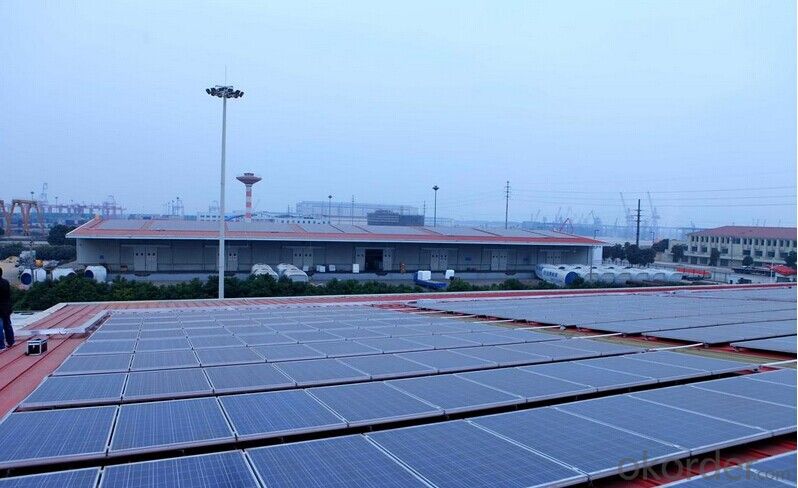
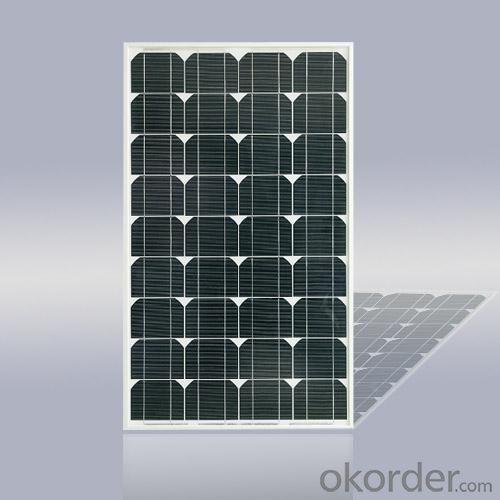
- Q: Are there any government regulations or certifications for solar inverters?
- Yes, there are government regulations and certifications for solar inverters. In many countries, solar inverters need to comply with specific standards and regulations to ensure their safety, performance, and grid compatibility. Additionally, there are various certifications, such as UL, CE, and IEC, that solar inverters can obtain to demonstrate their compliance with the required standards. These regulations and certifications aim to promote the widespread adoption of reliable and efficient solar inverters in the renewable energy industry.
- Q: Can a solar inverter be integrated with a smart home system?
- Yes, a solar inverter can be integrated with a smart home system. By connecting the solar inverter to the smart home system, users can monitor and control their solar energy production and consumption remotely. This integration allows for better energy management, optimizing the use of solar power, and potentially saving on electricity bills.
- Q: Can a solar inverter convert DC power to AC power?
- Yes, a solar inverter can convert DC power generated by solar panels into AC power that is suitable for use in homes and businesses.
- Q: What is the maximum DC voltage that a solar inverter can handle?
- The maximum DC voltage that a solar inverter can handle varies depending on the specific model and manufacturer. However, most modern solar inverters can typically handle DC voltages up to 1000 volts or higher. It is important to consult the manufacturer's specifications and guidelines to determine the exact maximum voltage rating for a particular solar inverter.
- Q: Can a solar inverter be used in a commercial solar system?
- Yes, a solar inverter can be used in a commercial solar system. A solar inverter is an essential component of a solar system as it converts the direct current (DC) generated by the solar panels into alternating current (AC) that can be used to power commercial buildings and equipment.
- Q: How does a solar inverter handle fluctuations in solar panel output due to temperature changes?
- A solar inverter handles fluctuations in solar panel output due to temperature changes by employing a maximum power point tracking (MPPT) algorithm. This algorithm continuously adjusts the operating voltage and current of the inverter to ensure that it operates at the maximum power point of the solar panels, despite the temperature changes. By dynamically adapting to the varying output of the panels, the inverter optimizes the energy conversion process and allows for efficient utilization of the available solar energy.
- Q: Can a solar inverter be used with different types of batteries?
- Yes, a solar inverter can be used with different types of batteries, as long as they are compatible with the inverter's specifications and voltage requirements.
- Q: Can a solar inverter be used with a hybrid solar power system?
- Yes, a solar inverter can be used with a hybrid solar power system. A hybrid solar power system typically consists of both solar panels and a secondary power source, such as batteries or a diesel generator. The solar inverter converts the direct current (DC) power generated by the solar panels into alternating current (AC) power that can be used to power appliances and devices in the home or business. Additionally, the solar inverter can also manage the flow of power between the solar panels, the batteries, and the grid, optimizing energy usage and ensuring a reliable power supply.
- Q: How does a solar inverter handle shade on solar panels?
- A solar inverter handles shade on solar panels by utilizing Maximum Power Point Tracking (MPPT) technology. This technology continuously monitors the solar panels' output and adjusts the voltage and current to maximize energy production. When shade falls on a panel, the MPPT algorithm identifies the affected panel and dynamically adjusts its output to minimize the impact of shade on the overall system performance. This ensures that even partially shaded panels can still contribute to the overall energy generation of the solar installation.
- Q: Can a solar inverter be used with thin-film solar panels?
- Yes, a solar inverter can be used with thin-film solar panels. Thin-film solar panels have different characteristics than traditional crystalline panels, but they still generate DC power that needs to be converted into AC power for use in homes or businesses. Solar inverters are designed to convert the DC power from any type of solar panel, including thin-film, into usable AC power.
Send your message to us
Solar Inverter Battery String Solar Power Inverter 10KW-20KW-US, ETL
- Loading Port:
- Shekou
- Payment Terms:
- TT OR LC
- Min Order Qty:
- 5 watt
- Supply Capability:
- 10000 watt/month
OKorder Service Pledge
OKorder Financial Service
Similar products
Hot products
Hot Searches
Related keywords
